The article below was published in today's issue of the Sports Business Journal. In reference to proposed legislation by the Pro Swimming Task Force. This legislation has been reviewed and supported by the Rules and Regulations Committee and will be voted on in the House of Delegates next month.
By TRIPP MICKLE
Staff writer
Published August 23, 2010 : Page 08
Soccer has corporate logos on jerseys, and NASCAR has them on cars. Soon swimmers could have them on swimsuits.
USA Swimming is considering amending its swimwear rules to allow professional and amateur swimmers to wear two corporate logos on their suits, caps, goggles and other clothing. If the rule is approved by USA Swimming’s board in September, swimmers will be able to wear the logos on their suits and caps for the first time at USA Swimming events.
To date, swimmers have been allowed to wear only the trademark logo of their suit, cap or goggle manufacturer. The new rule would allow them to wear the logo of any corporation provided it is not associated with tobacco, alcohol or pharmaceuticals that contain banned substances. Logos could even conflict with existing USA Swimming partners.
The proposal means that instead of stepping onto the starting block in an unadorned black swimsuit as Amanda Beard did earlier this month at the USA Swimming National Championships, she could step on the block in a suit featuring the logos of one of her existing corporate partners, like Mission Skincare.
The rule change is part of a concerted effort by USA Swimming to provide swimmers and swim clubs with more revenue-generating opportunities, and it would make swimming the latest national governing body to allow corporate logos at what are typically austere Olympic sporting events.
Selling logo space for athletes is already commonplace at Olympic organizations like USA Ski & Snowboard and USA Cycling. Other large national governing bodies like USA Gymnastics and USA Track & Field allow logos at domestic meets.
“It’s the only way to make these smaller sports revenue positive for athletes,” said Trent Staley, an athlete representative at USA Swimming who co-chaired a task force that developed the rule change. “Time will tell how much this really helps, but it could lead to the most revenue expansion for athletes in years.”
Swimmers would be able to wear the logos only at USA Swimming events like the national championships and Grand Prix events. They couldn’t wear logos on suits at events staged by FINA, the international swimming federation, or at the U.S. Olympic trials, unless FINA or the U.S. Olympic Committee allowed it.
USA Swimming executives plan to ask the USOC to consider allowing the logos to be worn at the U.S. Olympic trials before the 2012 London Games.
Even without being able to wear logos at the Olympic trials, athletes and agents expect the rule change to open new sales opportunities. Evan Morgenstein, CEO of Premier Management Group, which represents Dara Torres, Beard and other elite swimmers, said that an established Olympian could sell those logos for as much as six figures a year, while a less established swimmer could draw low- to mid-five figures.
USA Swimming’s proposal to allow athletes to sell logo space follows a recent study by the organization that revealed some of the financial challenges swimmers face, especially now that swimwear companies like Speedo, Nike and Tyr have eliminated or cut back on endorsements.
In an effort to help swimmers fill that lost revenue, USA Swimming not only is proposing an amendment to its rules that would allow swimmers to sport logos, it also is planning to double its monthly stipend for post-graduate athletes from $1,750 to $3,500.
“We saw that finances were going down, yet performances were going up, so we felt we really needed to find a way to support these swimmers,” said Matt Farrell, USA Swimming’s chief marketing officer. “That precipitated this whole thing.”
USA Swimming dropped a proposal that would have tied its stipend increase to a marketing agreement that would require swimmers to make two appearances annually on USA Swimming’s behalf and sign autographs. Agents questioned the proposal, and USA Swimming capitulated to their concerns, deciding to double swimmers’ stipends without any requirements.
“It’s basically just additional funding, which is what it should have been all along,” said Peter Carlisle, the head of Octagon’s Olympic division. “It’s the right decision, and it’s the right decision not to predicate it on turning over rights.”
Monday, August 23, 2010
Subscribe to:
Post Comments (Atom)
Labels
- AAC (2)
- Aaron Peirsol (1)
- advertising (1)
- Anti Doping (3)
- Athlete Funding (3)
- Athlete Protection (3)
- Awards (1)
- Beijing (1)
- Bid Cities (2)
- Chicago (1)
- Dan Hicks (1)
- Duel in the Pool (1)
- FINA (6)
- Fran Crippen (4)
- Frank Busch (1)
- Ian Thorpe (1)
- IOC (1)
- IRC (1)
- Jason Lezak (1)
- Kalyn Keller (1)
- Logos (2)
- Los Angeles (1)
- Make a Splash (3)
- Marshall (1)
- Michael Phelps (2)
- Muhammed (1)
- NASCAR (1)
- National Team (2)
- Olympic Games (1)
- Olympics (1)
- Open Water (5)
- Professional (2)
- Rowdy Gaines (1)
- speedo (1)
- Staley (1)
- suits (2)
- Swimming (1)
- Swimming Australia (1)
- USA Swimming Foundation (1)
- USADA (2)
- USOC (6)
- WADA (2)
- Weekly Wrap Up (1)
- Winter Olympics (1)
- Word Cup (1)
- World Champs (1)

No comments:
Post a Comment